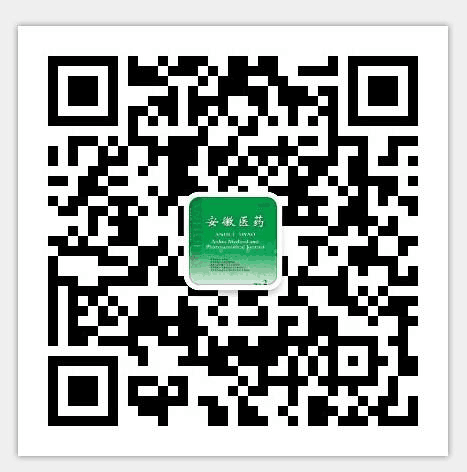| 杨同章,岳宗进,侯超峰,等.基于隐结构模型与频繁项集探讨退变性腰椎管狭窄症辨证用药规律[J].安徽医药,2025,29(7):1394-1399. |
| 基于隐结构模型与频繁项集探讨退变性腰椎管狭窄症辨证用药规律 |
| Chinese herbal medicine selection pattern of lumbar spinal stenosis based on data mining methods of latent structure model and frequent item set |
| |
| DOI:10.3969/j.issn.1009-6469.2025.07.026 |
| 中文关键词: 椎管狭窄 中草药 隐结构模型 频繁项集 数据挖掘 辨证用药规律 |
| 英文关键词: Spinal stenosis Drugs,Chinese herbal Latent structure model Frequency item set Data mining Herbals selec-tion rule |
| 基金项目:河南省卫生健康委国家中医临床研究基地科研专项( 2021JDZX2074) |
|
| 摘要点击次数: 245 |
| 全文下载次数: 69 |
| 中文摘要: |
| 目的探讨中医对退变性腰椎管狭窄症的辨证用药规律,为临床治疗退变性腰椎管狭窄症提供参考。方法计算机检索中国期刊全文数据库( CNKI)、万方、维普、 Sinomed、Pub Med、Embase、Web of Science、The Cochrane Library等数据库中建库至 2023年 10月中药汤剂内服辨证用药论治退变性腰椎管狭窄症的相关文献,提取证型、症状及中药处方信息建立退变性腰椎管狭窄症医案数据库,采用隐结构模型、频繁项集等数据挖掘方法,分析中药汤剂内服治疗退变性腰椎管狭窄症的辨证用药规律。结果经筛选共计纳入文献 67篇,涉及 1 130份病历资料。数据挖掘分析得出文献中共涉及 69项症状,包括腰腿痛、间歇性跛行、下肢麻木等,建立退变性腰椎管狭窄症证候隐结构模型。统计出高频用药,共涉及 140味中药,其中高频药物包括当归、川芎、牛膝、黄芪等;挖掘出症状 -中药频繁项集 5项,包括腰腿痛 +苔薄 +舌质紫 +当归 +川芎等;证型 -症状 -中药频繁项集 4项,其中包括气虚血瘀 +腰腿痛 +舌质紫 +当归 +川芎等。结论中药汤剂治疗退变性腰椎管狭窄症多以当归、川芎、牛膝、黄芪为主要药物,药物配伍依据临床情况辨证选药。 |
| 英文摘要: |
| Objective To explore Chinese herbal medicine selection pattern of degenerative lumbar spinal stenosis and to provide ref-erence for the clinical treatment of lumbar spinal stenosis.Methods The literature regarding Chinese herbal medicine for lumbar spi-nal stenosis published before October of 2023 was retrieved from the databases of CNKI, WANFANG Data, cqvip, Sinomed, Pub Med,Embase, Web of Science, The Cochrane Library, etc. The information of symptoms-syndromes-Chinese herbal medicine selection was extracted to establish medical database of degenerative lumbar spinal stenosis. The latent structure model and frequent item set wereapplied to analyze Chinese herbal medicine selection pattern of degenerative lumbar spinal stenosis.Results A total of 67 papers and1 130 medical cases were included. The data mining indicated that 69 symptoms were observed in the disease, including low back pain,intermittent lameness, paralysis of the lower limb, etc. A total of 140 herbals were identified, among which the frequently used herbalsincluded Danggui (Radix Angelicae Sinensis), Chuanxiong (Chuanxiong Rhizoma), Niuxi (Achyranthis Bidentatae Radix), Huangqi (Radix Astragali), etc. Five frequent item sets of symptom-Chinese herbal medicine were identified, including low back pain + thin whit-ish coating of the tongue + purplish dim tongue + Danggui (Radix Angelicae Sinensis)+ Chuanxiong (Chuanxiong Rhizoma), etc. Four frequent item sets of syndrome-symptom-Chinese herbal medicine were identified, including Qi deficiency and blood stasis + low back pain + purplish dim tongue + Danggui (Radix Angelicae Sinensis)+ Chuanxiong (Chuanxiong Rhizoma), etc.Conclusions Danggui (Radix Angelicae Sinensis), Chuanxiong (Chuanxiong Rhizoma), Niuxi (Achyranthis Bidentatae Radix), and Huangqi (Radix Astragali)are commonly used as the main herbals for treating degenerative lumbar spinal stenosis, and other herbals are selected based on clini-cal symptoms. |
|
查看全文
查看/发表评论 下载PDF阅读器 |
| 关闭 |
|
|
|


